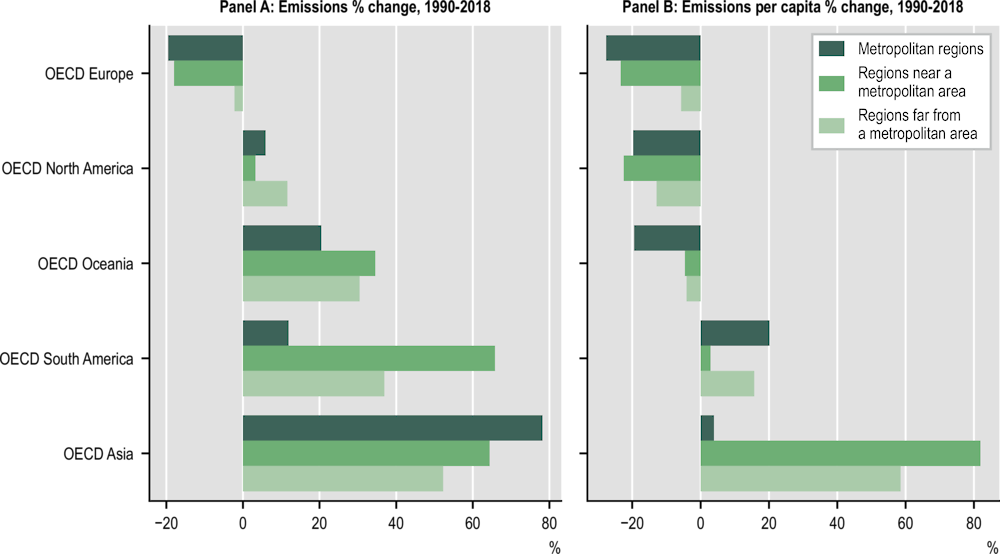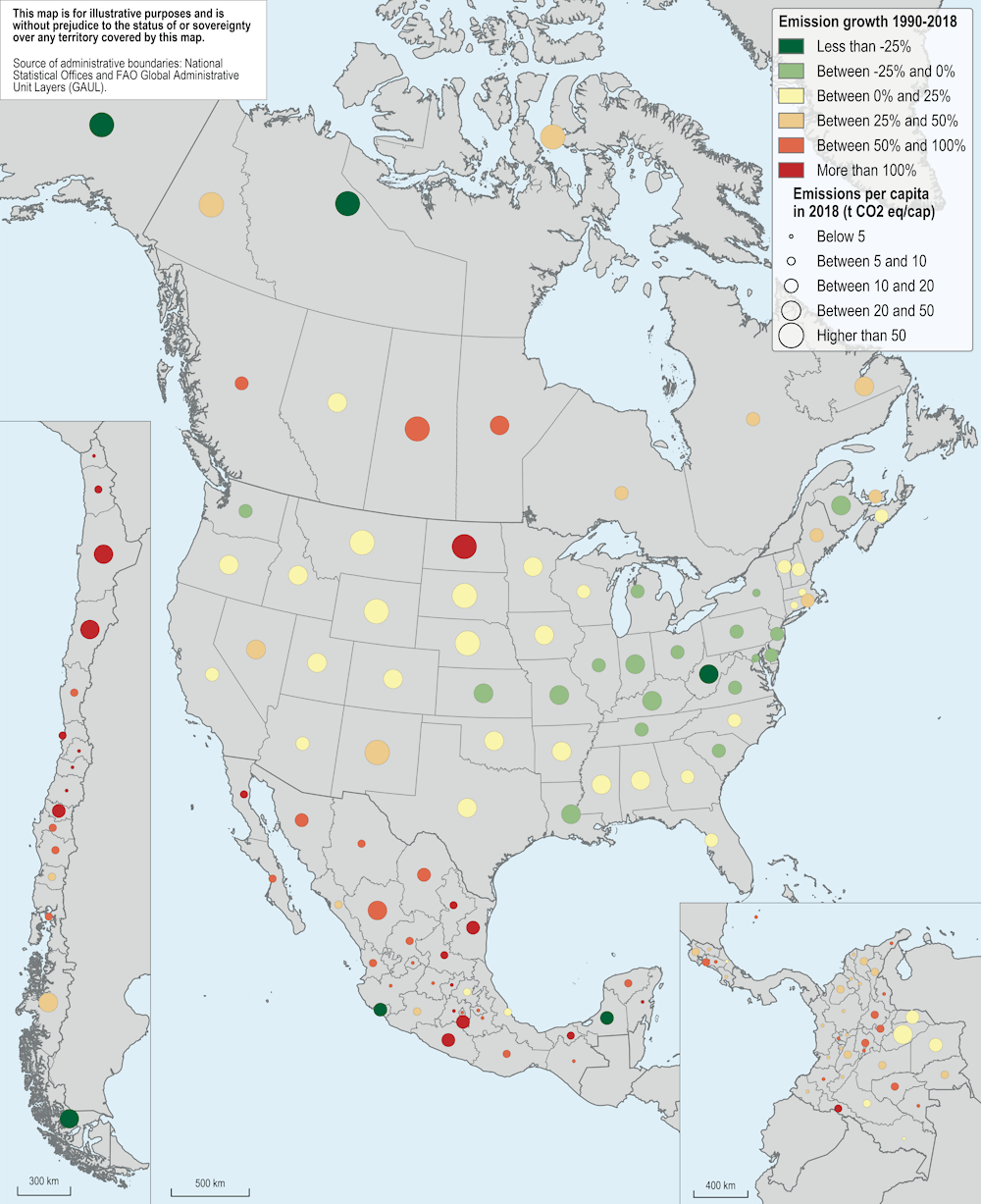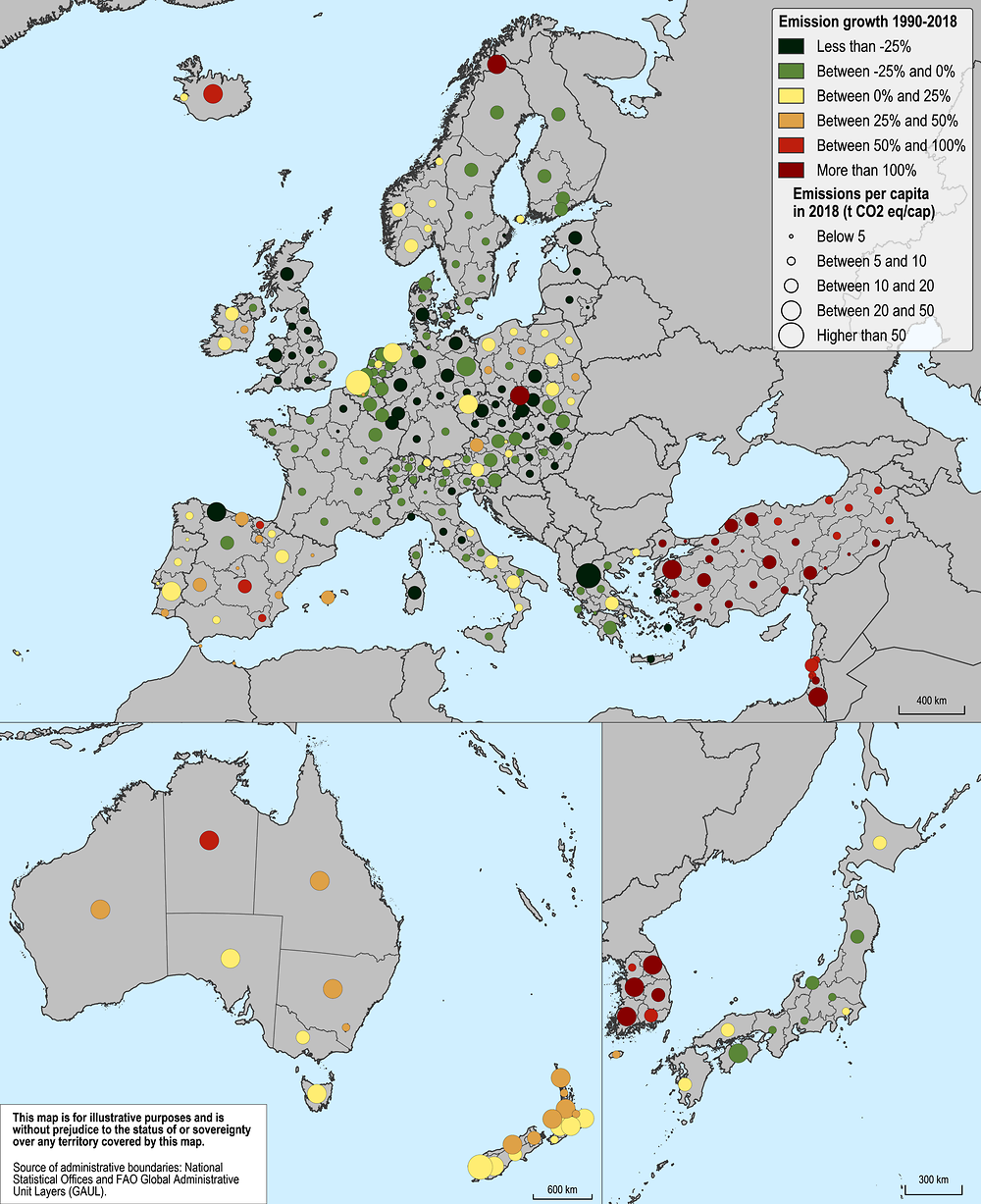Most OECD regions are far from meeting climate neutrality targets by 2050 and will have to undergo deep structural transformations.
Production-based greenhouse gas (GHG) emissions in OECD countries accounted for 30% of total emissions worldwide in 2018. Although the COVID-19 pandemic led to an unprecedented reduction of 5.8% in global CO2 emissions due to lockdowns and restrictions, emissions rebounded by 5% in 2021 approaching the 2018-19 peak (IEA, 2022). To meet the 2015 Paris Agreement ambition of keeping global temperatures at no more than 1.5°C above pre-industrial levels, global average emissions per capita per year need to drop to under 2.1 tonnes of carbon dioxide equivalent (t CO2-eq) by 2030 (UNEP-CCC, 2020). Many OECD countries have endorsed ambitious domestic GHG reduction targets by 2030 and plan to reach climate neutrality by 2050. The European Union (EU) endorsed a binding target of a reduction of at least 55% by 2030 compared to 1990. Similarly, the United States (US) plan a reduction of 50-52% by 2030 compared to 2005 and Australia by 43% over the same period.
However, recent trends in GHG emissions differ significantly across and within OECD countries. Indeed, in some regions, emissions have increased significantly despite the ambitious goals set at the national level. From 1990 to 2018, production-based emissions in Chile, Israel, Korea and Türkiye more than doubled for example, while in the United Kingdom (UK) and the Baltic states they declined by more than 40%.
Overall while emissions declined (by on average 23%) in 175 out of 432 OECD large regions between 1990 and 2018, they increased by more than 50% in 104 regions, with stark disparities often appearing in the same country. For example, in the US, emissions in North Dakota more than doubled, while they decreased by 30% in West Virginia (Figure 2.3).
Metropolitan regions register lower emissions per capita than other types of regions in almost all OECD countries. On average, emissions per capita in metropolitan regions are half those of regions far from a metropolitan area. Across OECD regions, emissions increased mostly in remote regions – by 14% – while remaining stable in other types of regions, although these trends vary significantly across countries. Metropolitan regions in European OECD countries are leading the transition to climate neutrality, as emissions per capita per year reached 7 t CO2-eq in 2018, 27% lower than in 1990, the largest decline across all types of small regions (TL3). Metropolitan regions in South American OECD countries accounted for the lowest emissions per capita in 2018 with 2.9 t CO2-eq. However, these regions have experienced the largest relative increase in emissions across the OECD (80%) since 1990. In Oceania and North America, although emissions increased across all types of regions, emissions per capita decreased, especially in metropolitan regions, which recorded a decline of 20% in emissions per capita since 1990 (Figures 2.1 and 2.2).
Most OECD regions are very far from reaching net zero by 2050. On average, regions will have to cut their emissions by a factor of 6 by 2030 to meet the United Nations (UN) target of 2.1 t CO2-eq per capita. In 2018, only 5 large regions in OECD countries – located in Colombia, Costa Rica and Israel – had production-based emissions per capita estimates lower than this target, while 40% of regions had emissions per capita higher than 10 t CO2-eq per capita. The US has the largest regional disparities, where the gap between the District of Columbia (3.6 t CO2-eq per capita) and North Dakota (180.7 t CO2-eq per capita) can be explained by the latter’s shale oil industry. Large regional disparities also exist in Canada, Greece, the Netherlands and New Zealand.




